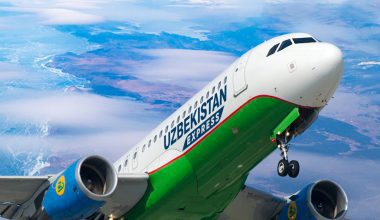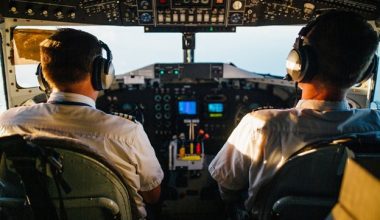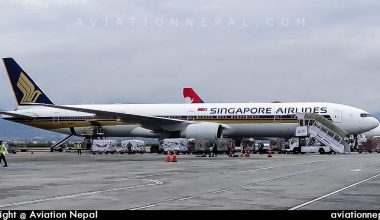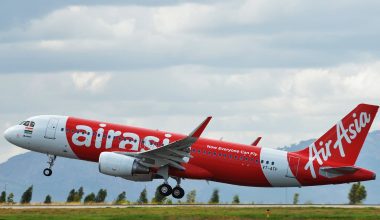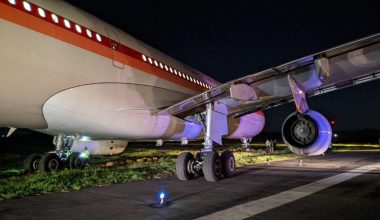EVA Airways is a Taiwan-based carrier that steadfastly advocates service innovation. Since its founding in 1989, the carrier has embraced innovation and team-oriented corporate culture and kept customers at the heart of its operations. EVA, which stands for Evergreen Airways, is a subsidiary of transportation conglomerate Evergreen Group, founded by Taiwanese tycoon Chang Yung-fa. True to its name, the carrier has been actively functioning for the last 31 years, offering innovative, reliable, and sustainable service.
EVA Airways is Taiwan’s privately-owned, second-largest carrier, behind the state-owned flag carrier China Airlines. It has set up its hub alongside China Airlines at Taoyuan International Airport near Taipei. It boasts a global outlook and flies a fully international route across Asia, Australia, Europe, and North America.

General Facts about EVA Airways
- EVA is the first private international Taiwanese carrier founded in March 1989 upon receipt of regulatory approval by the Taiwanese government.
- It is the second-largest airline in Taiwan in terms of passengers carried, route map, and fleet size.
- EVA features full passenger and dedicated cargo operations to over 60 international destinations on four continents. It has a regional subsidiary named ‘UNI Air,’ which has an operational focus on domestic and China routes.
- EVA Airways is a Skytrax 5-star certified airline, making it the sole carrier in Taiwan to receive the most prestigious accolade. The Taipei-based carrier has won the highest 5-star rating from Skytrax for eight consecutive years, starting in 2016. This 5-star airline certification reflects EVA’s highest level of service excellence in air travel, including smooth boarding orders, cabin cleanliness, flight attendant service skills, etc.
- EVA Airways focuses on safety and passengers and is at the forefront of safety innovation. It stands out as the world’s 9th safest airline, with no hull losses, accidents, or casualties since its founding.
- EVA is one of the first carriers to debut Premium Economy (positioned between economy and business class) on international flights. In 1991, it introduced the ‘Evergreen Class’ with wider seats and ample legroom for a price slightly higher than the economy class. Many international carriers inspired by EVA’s innovation started rolling out this class of service across their fleet.
- EVA Airlines is a Star Alliance member, joining the world’s largest airline alliance on June 18, 2013. EVA’s ascent into Star Alliance has offered member airlines’ customers wider choices in the expanding Cross-Straits market. On the other hand, through Star Alliance, EVA has the privilege of:
- serving new customers from all around the world and
- giving existing customers seamless connections across 1300+ global destinations in more than 190 countries.
A brief history of EVA Airways
- Early years
The Taiwanese government’s decision to liberalize the country’s air transport sector in the late 1980s paved the path for the inception of EVA Air. Formally established on March 8, 1989, the carrier commenced its operations two years later, in July 1991, with a small fleet of B767-300ERs.
Also Read: EVA Air to receive three new cargo planes within a year
EVA’s initial route map covered all-Asian destinations in Bangkok, Seoul, Jakarta, Singapore, and Kuala Lumpur. By the end of the year, it stretched its international service to Vienna, its first European destination.
- In the 1990s
The 1990s was a decade of rapid expansion for EVA, characterized by an increase in fleet count, passenger volume, and route network. In the 3rd year of its operation, the private carrier shuttled over 3 million passengers to 22 destinations globally.
The carrier branched out into dedicated cargo operations in April 1995, starting with international passenger flights. It also bolstered its presence in the domestic Taiwan market by building a stake in 3 domestic carriers. In mid-1998, EVA consolidated all three carriers and its existing domestic carriers into a single entity to form UNI Airways.
UNI Airways is EVA Air’s regional subsidiary that has ballooned out to become the largest carrier in the domestic Taiwan market in recent years. On top of intra-Taiwan and China operations, UNI also provides scheduled international services to Bangkok, Ho Chi Minh City, and Seoul.
- In the 2000s and 2010s
At the turn of the century, EVA Air switched its airliner of choice for long-haul routes to Boeing 777s. The flagship B777 aircraft were intended to operate flights to the US and Europe. A few months later, the Taiwanese airline also added Airbus A330-200 aircraft to its order book, with plans to deploy them on regional Asian routes.
Corporate reforms marked the early 2000s as the carrier began listing public stock offerings, streamlined management, and downsized staff number. EVA continued to reduce staff in the following years as part of cost-saving measures in response to increased fuel costs.
- In the 2010s
In the 2010s, EVA Air’s flight network expanded to include Toronto, Tokyo Haneda, New York, Chicago, and Houston. In this period, the carrier bolstered its North American network, providing more choices for US-based travelers to fly across the Pacific.
Other developments include full membership in Star Alliance (in 2013), Skytrax 5-star rating (since 2016), delivery of the first B787-9, etc.
Current position of EVA Airways
Today, EVA Air boasts a global network that connects Asia and Mainland China to key cities in Europe, North America, and Oceania. The second-largest Taiwanese airline spreads its wings to an extensive network of over 60 major business and tourist destinations worldwide.

EVA Air operates most of its flights out of its primary hub in Taiwan Taoyuan International Airport. It has also established focus cities in Bangkok-Suvarnabhumi, Kaohsiung, and Taipei-Songshan to operate point-to-point routes.
EVA Air flights to North America
EVA’s North American network is strong, with 84 frequencies per week. The carrier has a sizeable presence in the US with regular passenger flights to Chicago, Houston, Los Angeles, New York JFK, San Francisco, and Seattle
From Taipei Taoyuan, EVA operates:
- 3xdaily flights to Los Angeles (LAX)
- 1xdaily flight to Chicago O’Hare (ORD)
- 3xdaily flights to San Francisco (SFO)
- 1xdaily flight to New York (JFK)
- 6xweekly flights to Houston (IAD)
EVA Air mostly deploys its state-of-the-art Boeing 777-300ER aircraft to ferry passengers between the US cities and Taipei.
Another crucial North American destination in EVA Air’s network is Canada. The Taipei-based carrier operates regular passenger flights to Toronto and Vancouver.

EVA Air’s flights to Europe
The Star Alliance member EVA Air opens European travel with 32 weekly frequencies. Its European route map covers Paris, Munich, Milan, London Heathrow, Vienna, and Amsterdam. The carrier added Munich to its growing intercontinental network in November 2022.
EVA Air’s flights to Asia
With an extensive network of connections, EVA Air enjoys a strong presence in the Asian/Pacific region. From its central hub at Taoyuan International Airport, the carrier operates a profitable network of intra-continent flights to:
- Every region of Mainland China (Beijing, Chengdu, Chongqing, Dalian, Guangzhou, Guilin, Hong Kong, Hailar, Hangzhou, Harbin, Hohot, Huangshan, Jinan, Macau, Ningbo, Shanghai, Taiyuan, Shenzhen, etc.)
- Jakarta and Denpasar in Indonesia
- Aomori, Fukuoka, Hakodate, Komatsu, Matsuyama, Nagoya, Okinawa, Osaka, Sapporo, Sendai, and Tokyo in Japan
- Kuala Lumpur in Malaysia
- Cebu, Clark, and Manila in the Philippines
- Singapore
- Chiang Mai and Phuket in Thailand
- Da Nang, Hanoi, and Ho Chi Minh City in Vietnam
Fleet of EVA Airways
Taiwan-based EVA Air operates a modern and well-structured fleet of Airbus and Boeing narrowbody and widebody jets. Its passenger fleet comprises 75 aircraft including 20 Airbus A321-200s, 3 A330-200s, 9 A330-300s, 34 Boeing 777-300ERs, 4 Boeing 787-9s, and 8 Boeing 787-10s.
Also Read: Eva Air flight carrying 199 people hit by severe turbulence:
The 184-seat Airbus 321-200 jets fly mainly in mainland China. The green-and-white airline aims to pivot away from narrowbodies, mainly due to post-COVID-19 pent-up demand. EVA is set to shrink the size of A321-200s and replace them with widebody planes. The carrier requires widebodies elsewhere in the system to cater to a strong pent-up demand. EVA’s A321ceo has a two-class layout accommodating eight business class and 176 economy class seats.
EVA’s A330-200 can carry 252 passengers in dual-class configuration, i.e., 24 in Premium Laurel and 228 in Economy class.

The A330-300s are much larger, with the capacity to accommodate 30 Premium Laurel and 279 economy class customers.
Boeing 777-300ER is the most dominant model, accounting for nearly half of EVA’s 75-jet fleet. In coming years, the Taiwanese carrier will gradually retire its older flagship B777-300ERs in favor of new Boeing 787 Dreamliners.
Also Read: Innovation Is Changing The Face Of Flight
The B787-9 and -10 variants are the newest entrants in EVA’s fleet and prove to be a promising fit for the carrier. EVA plans to use 787-9 on Europe and North America routes and 787-10 on routes within Asia.
Is EVA a good airline?
EVA Air is a 5-star airline that prioritizes passenger care, attention to detail, and service innovation. It is in a relentless stride to provide service that exceeds passengers’ expectations and ensures the flying experience keeps getting better. The numerous accolades won by EVA (such as Skytrax 5-star rating, Business Traveler’s Best Business Class Sparkling, APEX’s Best Cabin Service, etc.) are testimony to its commitment to excellent customer service.



